France has experienced various revolutions and battles throughout its history — from the forming of Gaul pre-CE to attacks during Imperial Roman control to the Italian Wars in Renaissance to the revolutions of the 18th and 19th centuries.
Whether dramatized by thoughts of madame la guillotine cutting into a cake-loving queen, or the Les Miserables music that romanticizes the 1848 student revolts based on Victor Hugo's novel of the same title, I think its fair to say France's revolutions have not gone unnoticed.
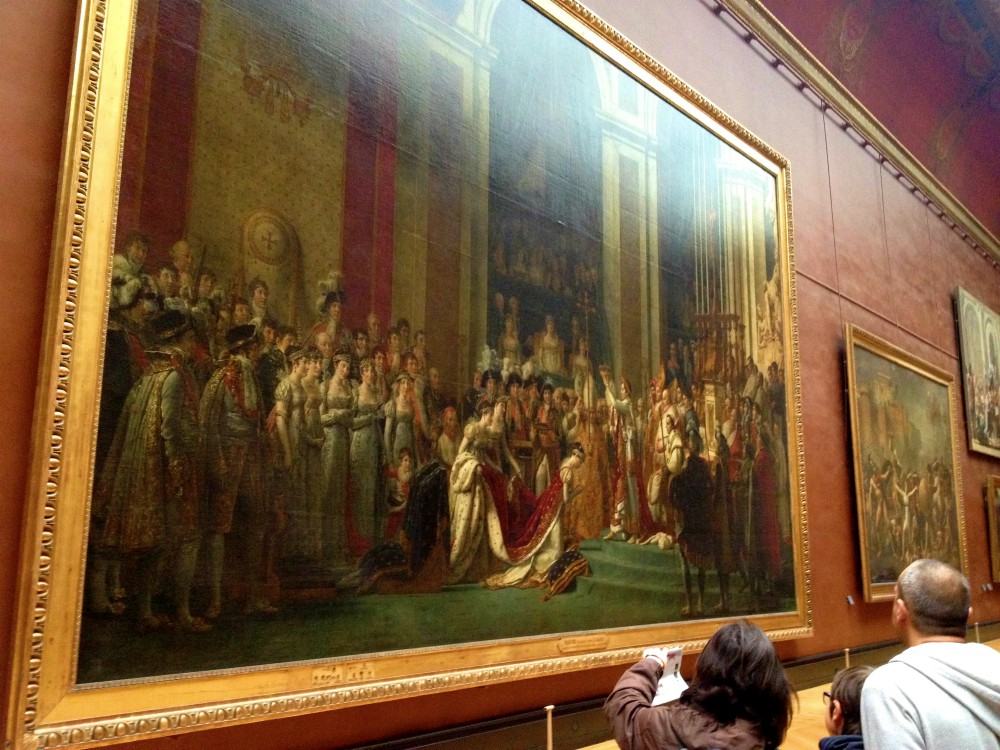 The Coronation of Napoleon, Jacques-Louis David, 1807.
The Coronation of Napoleon, Jacques-Louis David, 1807.
And further fair to say, that the artists of these periods took current affairs to heart in the portrayal of these events.
Théodore Géricault and Jacques-Louis David may come to mind...
Would Jehan Georges Vibert come to mind?
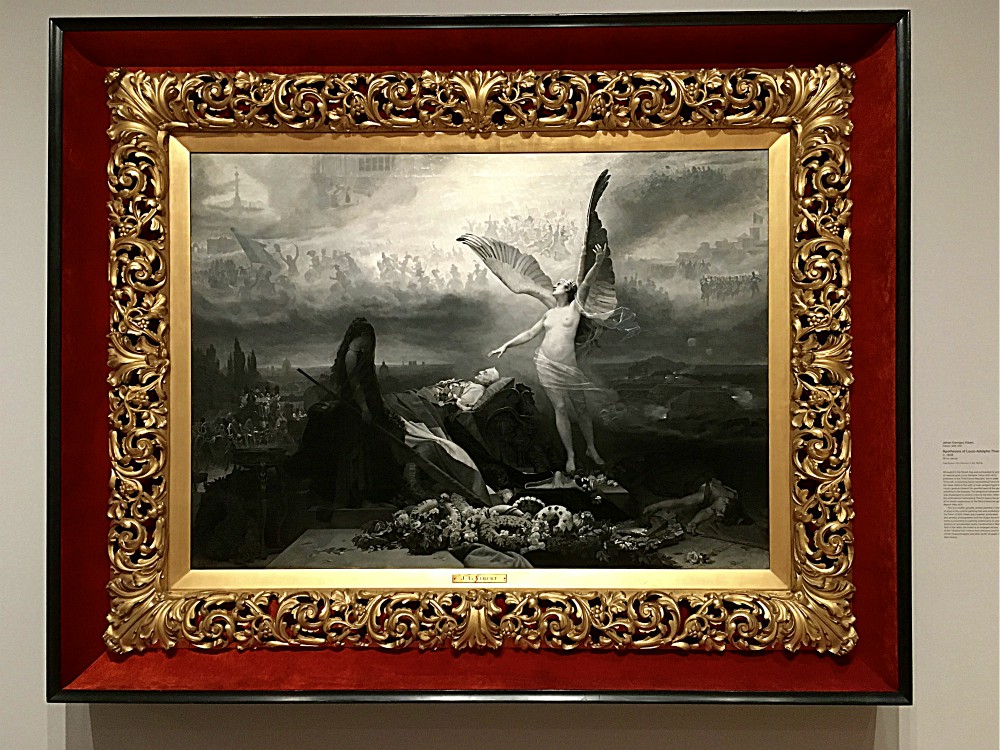 Apotheosis of Louis-Adolphe Thiers, Jehan Georges Vibert, 1878.
Apotheosis of Louis-Adolphe Thiers, Jehan Georges Vibert, 1878.
I came across this grisaille masterpiece while at the Harvard Art Museums, immediately drawn to it by the stark contrasts of light and dark.
Here lies Adolphe Thiers, first president of the third French Republic (1871-1873), watched over by a mourning France and winged Victory.
Victory's wing cut the painting, literally slashing the space to delineate between the grief in mourning of the mortal world and the idealized glory of Thiers' accomplishments while alive.
Thiers was not a beloved president, thus this painting met much critique.
But as a grisaille painting — rendered completely in grey tones to evoke sculpture — it forces the eye to focus on the individual elements of the scene, undistracted by colors.
I haven't seen the color version in person, but I love the solemness and deep contrast of the grisaille. The ostentatious triple frame also adds to the drama of the scene.
Paintings were rendered in grisaille as a practice for apprentices — and have been used both as training and for particular effect since the Renaissance.
The grisaille also offers us an important historical clue — photography was still in its early stages, and this painting displays the relationship between the two media — how they differ and how they're alike.
We know this is a painting because of the heavenly figure and scenes in the sky, yet could the foreground almost be a photograph?
The triple-frame, or "shadow-box," commonly used for framing photographs, only furthers the blending of the media and perhaps also acts as a further bridge between real and heavenly.
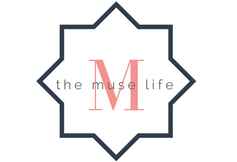

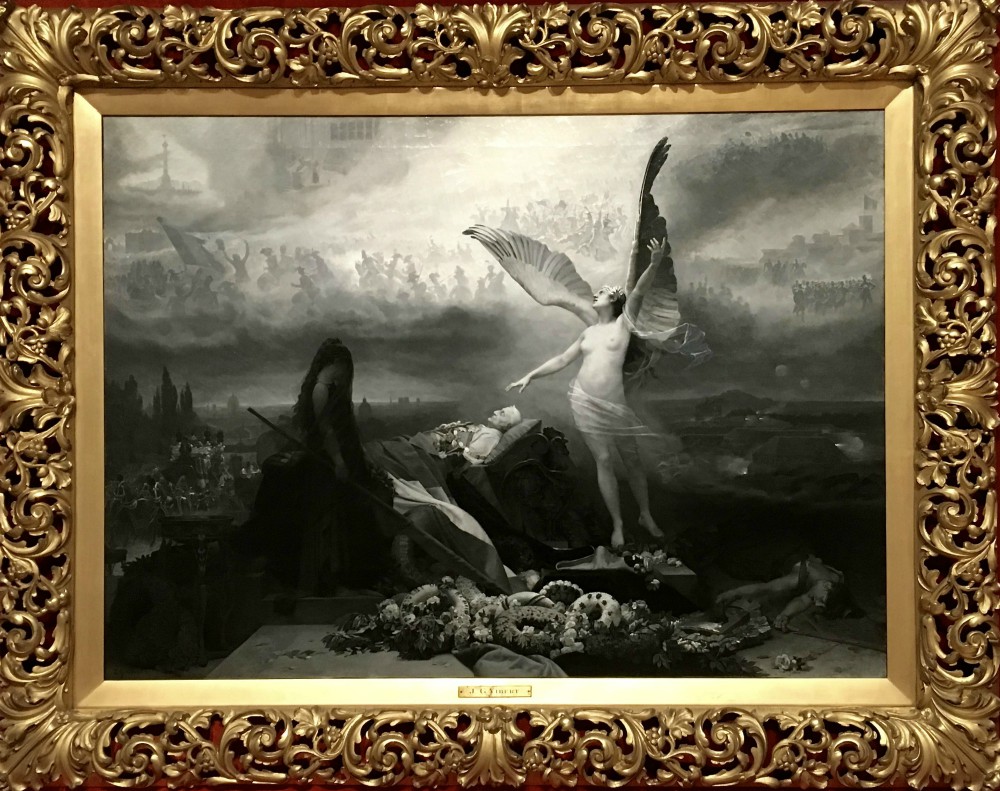
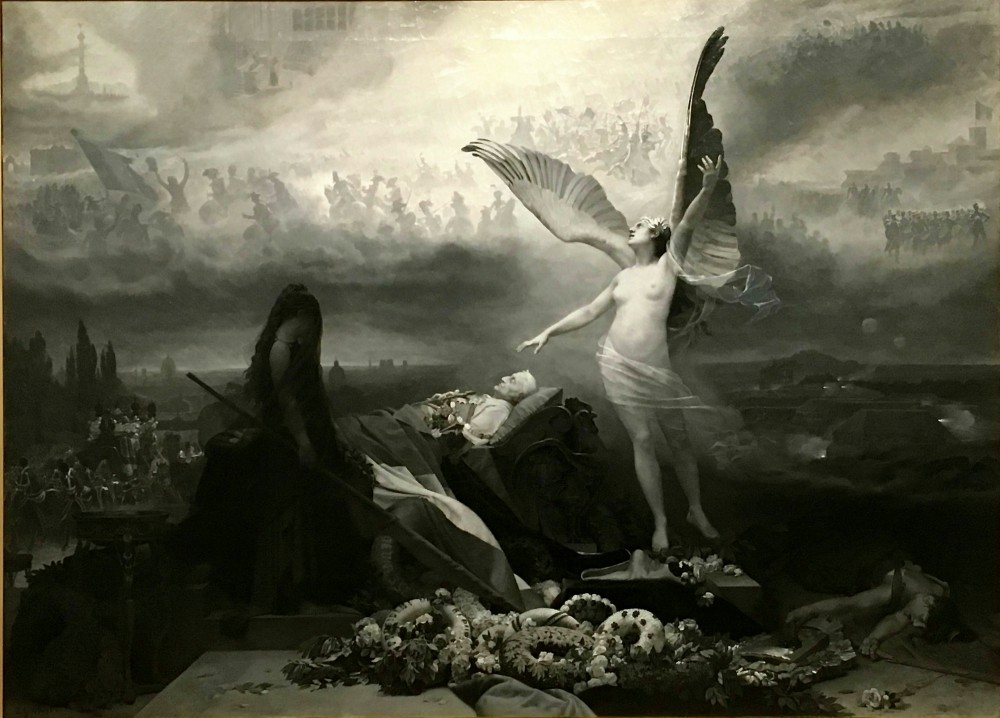
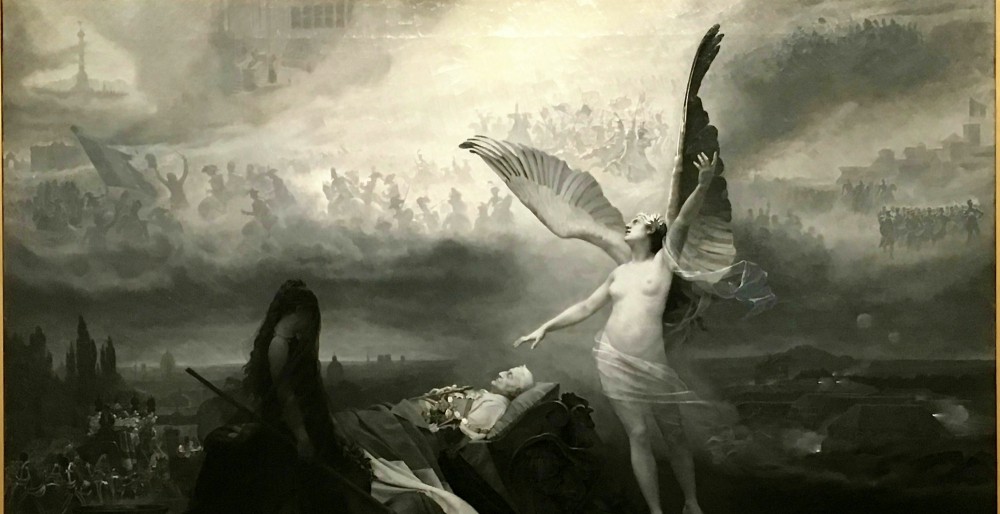
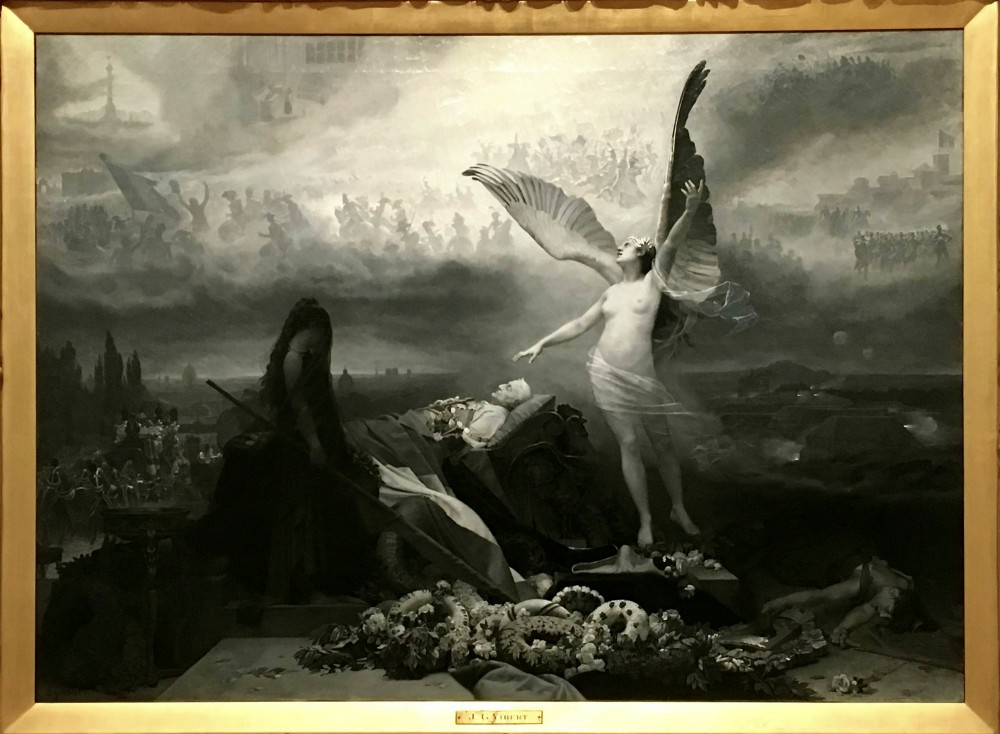
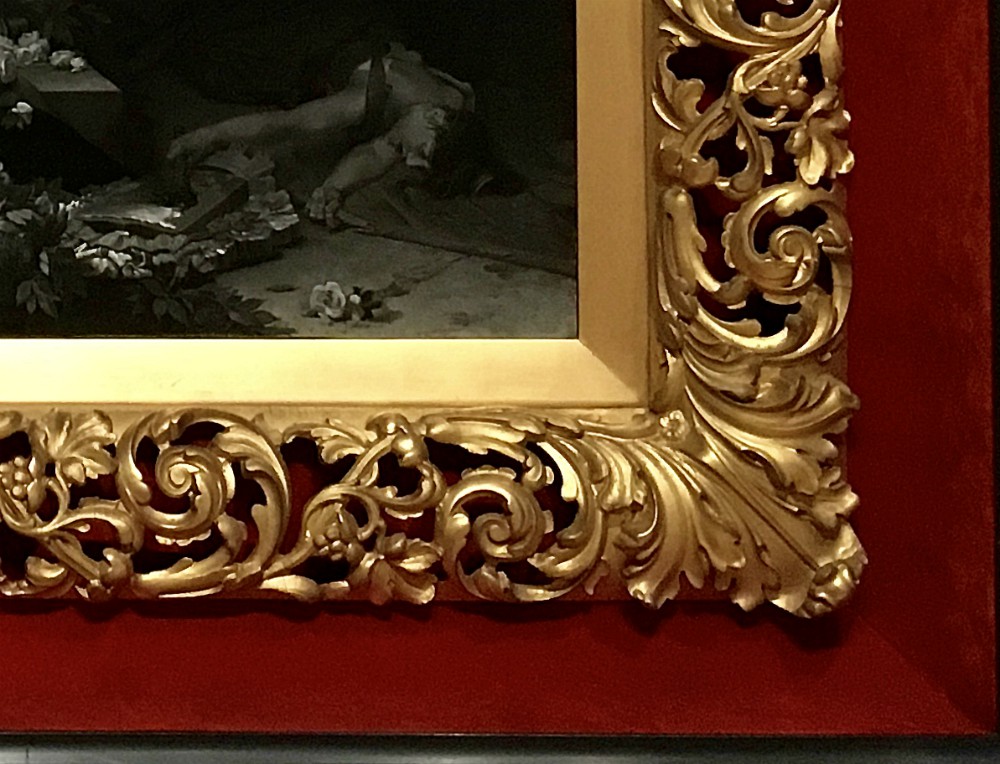
The painting is so dramatic, the explication so clear, the photos so compelling. Thanks for sharing.
Fascinating commentary as usual. Thanks for expanding my knowledge of art which has always been pretty superficial. We will have to visit the Harvard Art Museum when we are in the area in May
They have a great collection – practically every historical period you can think of!